Still ween’st thou me weaponless, craven wight?
Threat not with women! Thyself do battle,
Lest Fricka fail thee at last!
For see! from thine house-tree's blossoming stem,
I drew undaunted the sword;
And its edge right soon shalt thou taste!
Introduction
Once the home of the world’s most powerful military with the most advanced hardware, the United States of America has been greatly humbled by the Great War. Few of its war machines were spared the wrath of atomic annihilation, and fewer still are in working condition after all these years. Production centers were destroyed, the chain of supply disrupted, knowledgeable personnel slain, electronics fried by EMPs, and the years themselves have taken their toll on surviving weapons and vehicles. Still, America is the country with asphalt-paved arteries and more guns than people, and neither the car nor gun have disappeared from the continent since the Nuclear War. Indeed, the challenges presented by the Great War and its aftermath have only emboldened the surviving engineers and gunsmiths of the post-apocalyptic world to overcome them and keep the wheels of war industry turning.
Small Arms
Being home to the most heavily-armed populace in the world, America was still flush with small arms even after the Great War transpired. Rifles are one of the few American commodities more prevalent in the countryside than in big cities, and privately-armed citizens formed the backbone of many militias and warlord regimes.
As many a warlord soon learned, continuously supplying an army equipped with mismatched private guns is a logistical nightmare, and some degree of uniformity proved necessary in order to field large, organized warbands for long periods of time. What little military industry that still remained in America proved vital for the coming struggles, but such machinery largely remained in the hands of government forces. Other factions had to retool civilian industry for military purposes or set up new cottage industries and arms workshops in the small towns and countryside to supply their soldiers with arms and ammunition. Many of these new workshops were started by antebellum gunsmiths, who often became powerful figures within their local communities (and there were not a few who became petty warlords in their own right).
Making new weapons was a costly endeavor, so a common compromise was to re-bore pre-existing weapons to a standard caliber of ammunition. After this, the most widespread approach was to simply copy popular gun designs. The vast majority of postwar small arms in North America are copies of prewar firearm designs, with greatly varying levels of quality. AR-15 clones are extremely prolific, and range in quality from cheap scrap guns cobbled together by the slaves of roving Badlands gangs to antebellum-grade M4 Carbine clones produced by modern arms factories.
There are plenty of other weapons that are extensively copied across the country: the Mossberg 500, Winchester 94, Smith & Wesson 10, Ruger 10/22, Remington 700, Colt M1911, M14, and M3 Grease Gun are a few examples of domestic, US-designed arms that have made their way into warlord arsenals. There are plenty of foreign-designed works as well: the Kalashnikov, Mosin-Nagant, Gewehr 98, Uzi, Glock, Beretta 92, FN FAL, and Sten Gun are just a few models, though there are many others. Nonetheless, comparative unfamiliarity with foreign models makes many of these weapons an uncommon sight next to American arms. The single most prolific foreign rifle design in America is actually the H&K G3, which forms the pattern for the United States of Aztlan’s standard-issue Xolotl rifle.

As time progresses, the old workshops and retooled factories are giving way to new, modern munitions factories that produce new weapon designs specially tailored to the needs of postwar factions. Likewise, the return of international trade has introduced foreign weapons to the arsenals of whatever powers are able to capitalize on foreign commerce. The age of the scrappy AR clone is coming to an end, and there is now not one American military-industrial complex, but many.
Unorthodox Weaponry
There was not an extreme shortage of firearms in America after the Great War, but the country felt a distinct want for ammunition in its wake. Without a supply chain to provide new ammunition or gun parts, many Americans found themselves unable to depend upon conventional firearms and were forced to resort to alternative implements of battle.
For those with fewer means than an organized faction, but with greater means than the truly desperate, the solution was junky workshop arms. These are the scrappy grease guns, pipe guns, and zip guns of the Starving Time—few of which still survive today, owing to their limited utility and fleeting lifespans. A small handful of people with working presses churned out 3D-printed firearms, whose main purpose was to aid the user in battle as they attempted to find a more permanent, reliable weapon to last them through the apocalypse. Of this category of improvised firearms, the scrap submachine guns are the most widespread today, although basic zip guns outnumbered them decades ago.
One unorthodox form of weaponry that has caught on in certain circles is the needlegun. Needleguns fire small metal darts or flechettes, which have certain advantages over conventional firearms that make them useful in a post-apocalyptic setting where armor is scarce. Needleguns aren’t very common even after the apocalypse, but have their admirers among a certain few factions who swear by them. The F.A.L.A.N.X. in upstate New York issues its M2055 Scimitar needle pistol to officers and pointmen, and the Tizona needlegun is a popular option for Aztlan soldiers with extra cash on hand.
After improvised firearms comes auxiliary hunting gear, which many rural Americans possessed on the eve of the Great War. Some states, such as Virginia, have a hunting season set aside for muzzle-loading rifles; this includes obsolete museum pieces and modern hunting designs—the Virginia Legion in Ruther Glen is quite fond of the latter. Indeed, many strange, antiquated rifles from museums and private collections made their way into the hands of post-nuclear fighters. The utility of these weapons is limited, so most historical novelties like Harpers Ferry rifles and Brown Bess muskets have ended up back in museum collections.
Alongside muzzle-loaders are crossbows, which have earned a small place back on American battlefields, mostly in the ranks of desperate or impoverished warlords, or rugged, isolated militias. Crossbows and their bolts are easier to make and are quieter than firearms. They remain a popular hunting implement and helped feed millions of Americans during the Starving Time and beyond. The largest faction to regularly employ crossbowmen as a staple of their armies is the George Washington Legion, which is short on lead and gunpowder but flush with fanatical, devoted warriors. The less-ubiquitous, lower-tech cousin of the crossbow is the bow and arrow, which has a smaller presence in American society today and is mostly associated with starving poachers encroaching on warlord-owned estates.
When even crossbows are too resource-intensive to field, melee weapons are the last resort. The melee weapons of the Starving Time were simple and brutish: axes, hammers, machetes, knives, and improvised clubs. Better-organized warlords soon introduced pikes to the fray; not the monstrous 18-foot pikes of the Alexandrian phalanx, but smaller, wide-bladed spears like those wielded by 18th century reservist militias and town guardsmen. Knives and machetes remain commonplace to this day, even among professional, well-equipped armies. Emergency implements like tire irons are still used to bludgeon people to death as well, mostly in truly desolate places like Nuclear Exclusion Zones and the Badlands. The pike’s brief resurgence has mostly ended, but it can still be found among the George Washington Legion and as a reservist’s implement in certain austere factions. The Fraternal American Republic still maintains a ceremonial battalion of elite, pike-wielding guardsmen.
Heavy Weaponry
Any gangster can assemble a band of fighters armed with small arms, but a true conqueror’s army requires heavy-hitting firepower and the industry required to field it. Post-nuclear America is extremely limited in the variety of heavy weaponry it can produce and maintain, but wastelanders are nothing if not inventive.
Machine guns are a rarer sight than they were before the Great War, but are by no means forgotten. Every faction employs at least a few, and most armies nowadays have an average of one machine gun for every hundred fighters, and a heavy machine gun for every three hundred. Most machine guns in America are derived from the M249 and the M60 machine guns, but there are also postwar models based on more primitive weapons like the BAR, Lewis gun, and even the ancient Vickers and Maxim guns. For the warlord who can’t afford this kind of weaponry, an acceptable substitute is an AR-15 conversion that is analogous to the RPK-74 in comparison to the AK-47. The gold standard of machine guns, however, will always be the Browning M2, which is always a centerpiece of any battle it engages in.
Artillery in the wasteland is rare. It mostly consists of hand-me-down field guns from before the Great War or improvised cottage industry mortars. Both are very capable weapons, but few powers can use artillery on an industrial scale.
The basic mainstay of most wasteland ordnance is the improvised mortar or cannon. These bomb-lobbers and barracks-busters are unreliable, inaccurate, and often as dangerous to the user as they are to the enemy, but are the best that most warlords have to offer in a long-distance firefight, and are necessary for indirect plunging fire. The next step up are standard-issue mortars and field guns produced by arms workshops, like the United States of Aztlan’s 58mm mortars and 75mm long-recoil field guns. Even these upgraded artillery pieces have their shortfalls, however; designed for use on the open prairies against impotent light infantry armies, Aztlan heavy guns have only a 25 degree range and lack sufficient depression to match modern howitzers.
The Kingdom of the Ozarks has one of the stronger artillery corps of the wasteland. Their army is equipped with Royal Springfield Armory 105mm hydraulic recoil guns: fast, lightweight, powerful, and accurate, designed by the best artillerists from the Arkansas National Guard. If the Aztlan 75mm is to the mechanical recoil field gun what a bolt-action rifle is to a musket, then the Springfield howitzer is to the Aztlan gun what a machine gun is to a bolt-action rifle.
Further north and west is the United States of America (Dodge City), whose experienced military has triumphed across several different theaters. They possess a small arsenal of M198 155mm howitzers, extremely formidable antebellum weapons that cannot be easily replaced, due to a lack of materials. Its successor is the more commonplace M42 75mm howitzer, a simplified postwar design that uses locally-available materials and is easier to train new recruits on.
With differing weaponry comes differing ideas on how to use it. The Ozark military is dominated by “Mad Malcolm Thought,” an eclectic doctrine promoted by the royal family and loosely based on the theories of Martin van Creveld and William S. Lind. In accordance with this doctrine, the Ozark military is heavily decentralized, with great initiative given to lower-level commanders. As a result, the Ozark military possesses a large amount of medium-caliber guns that are widely dispersed throughout the military at the regimental level. The USA-Dodge City doctrine, by contrast, is more conventionally American and prefers to concentrate their heavy firepower in key positions at the divisional level for a great offensive push.
The cream of American artillery is the M777 howitzer, the most advanced model available on the eve of the Great War. Extremely few M777 howitzers survive today, as most were sent to the frontlines overseas and were lost in the fighting. Many of those that remain no longer function due to their dependence on digital components. The USA-EC and the State of Alabama are the only factions that employ the M777 as a standard implement of battle.
Technicals
No post-apocalyptic tale is complete without technicals, the improvised combat vehicles which generally includes civilian automobiles equipped with fixed weaponry. Technicals were popularized in the Middle Eastern conflicts of the late 20th and early 21st centuries, but date further back to the Russian Civil War, when the anarchist Black Army mounted Maxim guns on top of horse-drawn carriages. The oldest technicals are arguably the war wagons of the Hussite Wars, a medieval religious conflict in what was once the Kingdom of Bohemia.
For all the depressing mundanity and disappointment of the apocalypse, one romance that did come to life was the dashing image of the hardy fleet of technicals riding off into battle. Technicals were favored by post-apocalyptic Americans thanks to the mobility and firepower they offer in relation to their low cost and ease of use. They prove more than a match for most leg infantry, but cannot take on proper armored vehicles. In this regard, technicals function as the light cavalry of the wasteland, and are best used for scouting, escorting, forward skirmishing, and light fire support.
The average technical is nothing more than a civilian pickup truck equipped with a medium or heavy machine gun. There is no standard template for technicals, however, and the results can vary greatly. The Provisional All-American Government has a mostly-standardized technical schema, consisting of jeeps with bed-mounted anti-aircraft guns. The USA-Midland favored recoilless rifles, and the United States of Aztlan has picked up this practice after them. The Kingdom of the Ozarks originated as a warband of armed truckers, and has long favored the conversion of semi-trucks into armored gun truck platforms.
The final word in technicals is the Road Warriors’ “Greyhound Bus-nought,” a heavily-armored, souped-up coach bus equipped with three medium machine gun turrets, two heavy machine gun turrets, a roof-mounted 20mm cannon and a roof-mounted 4.2-inch mortar. The Road Warriors employs four such monster technicals; some doubt the actual utility of these war machines and consider them a waste of resources, but supporters of the Busnought idea defend them as a morale booster.
Tanks

At some point a technical stops being a technical and becomes what is effectively a crude tank. Plenty of factions wield these, with varying degrees of efficacy, and some possess actual armored vehicles of pre or post-war make. Most prewar tanks were destroyed in the Great War or are dependent on defunct electronic parts, hindering their continued use decades later. Some, more obsolete models were not deployed overseas or destroyed in the nuclear exchange, however, and were kept safe in National Guard stockpiles. These modern tanks were formidable, nigh-unstoppable war machines during the Starving Time, but were so few in number that it was hard for them to make a serious difference when it really counted.
A few more tanks existed in the hands of private collectors, mostly WWII museum pieces. The urgent demands of the post-nuclear anarchy brought them out of their garages and museum exhibits to return to the field of battle once more. When pitted against lightly-armed infantry, they seldom battled each other but instead functioned as mobile pillboxes and gun emplacements—a role in which they excelled. Most tanks built after the Great War were either Killdozer-style scrap tanks or replicas of WWII-era vehicles like the M4 Sherman and Panzer III. Modern tank arsenals are still struggling to move past World War-era technology, but the fact that there are factions building tanks at all is impressive, considering the circumstances. The USA-Bozeman possesses the country’s largest and most modern tank fleet, making them extremely formidable on the battlefield; it’s just a shame they can’t materialize that marshal superiority into popular support or control over the desolate Montana wilderness.
Boats
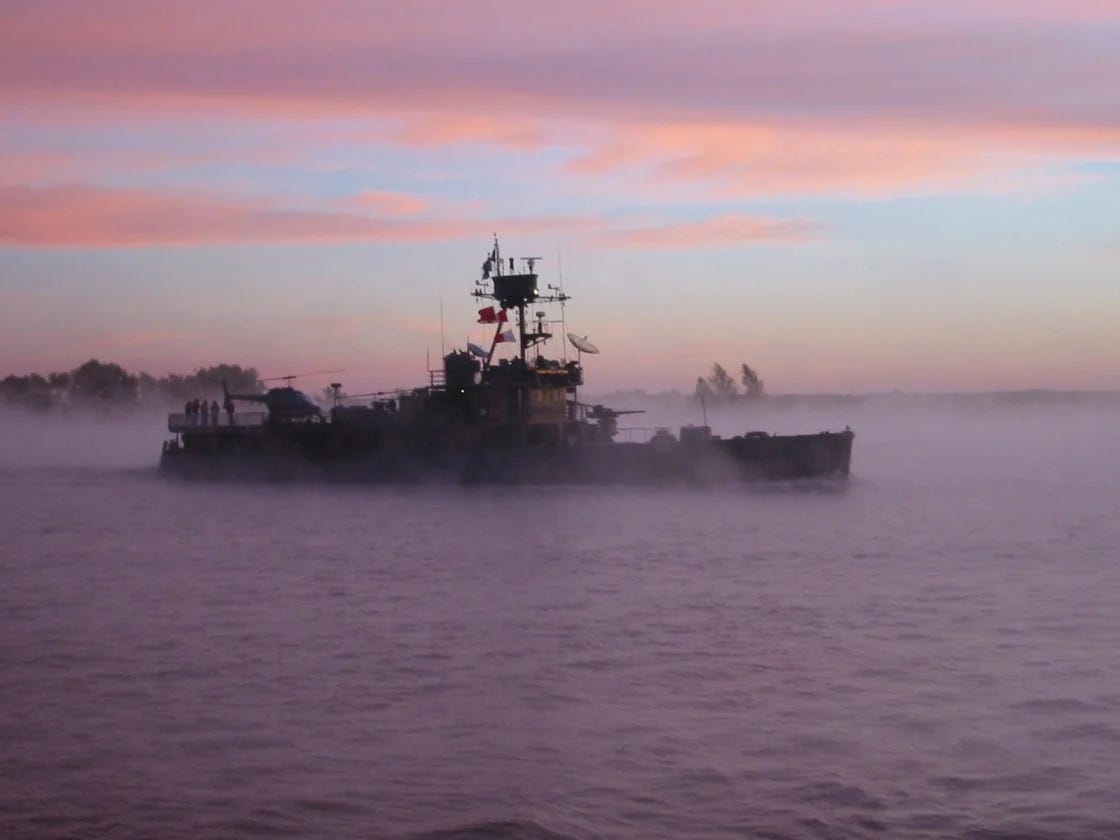
Because so much economic activity is contingent upon maritime and riverine trade, America’s waterways are much more militarized than they used to be. Powers who depend on major rivers for foreign trade, such as the Kingdom of the Ozarks, Second American Republic, and the Northwest American Republic, have brown-water navies that can patrol the rivers, protect their merchant fleets, and even attack enemy river forts to free up the waterways for commerce.
These vessels range in complexity from crude river barges armed with guns to Civil War-style gunboats to advanced, Great War-era river monitors. Many merchant vessels themselves are lightly armed to fend off basic bandits and pirates, but their military counterparts are better equipped.
Some factions have a coastline, either along the sea or the Great Lakes, which might as well be seas. Their fleets have greater range and carry out a more diverse set of functions in support of their masters’ maritime goals. Some factions host raiding fleets to sack foreign coastal cities and outposts, while others have a robust escort fleet to defend merchant convoys. The continued existence of the American Council Republic, for instance, is only thanks to the extensive support ferried across Lake Michigan by the American Socialist Federative Republic.
The two most powerful navies in America are both descended from the antebellum US Navy: the Republic of Hawaii and the USA-Elizabeth City. The former has since liberalized into an independent republic, but it maintains a large and formidable, albeit aging, navy. The USA-EC has a smaller, but more experienced fleet that has aided it in expanding all across the eastern seaboard. The crown jewel of their navy is the USS Constellation, a battle-hardened frigate that carried them through many arduous campaigns. The Constellation was originally a Soviet frigate commissioned in 1978 before it was sold to the Yugoslavians, then to Algeria, before ending up in the hands of Angola. The Angolans sold the ship to the United States of America Abroad on the condition that they be allowed to nationalize American businesses across their country, and the USAA handed it over to the Elizabeth City navy when they united with the Elizabeth City government.
The most important vessels of the post-nuclear age are the last remnants of the old: nuclear submarines. The most impactful use of the nuclear submarine was in its capacity for secondary strikes, to lay low during the initial nuclear exchange and use its remaining missiles to destroy enemy centers of reconstruction and rump leadership. Every power that possessed nuclear submarines engaged in this practice, and many sub captains went on to become conquering warlords in their own right. America is home to a few: Matfei Sokolov’s fiefdom in the San Juan Islands off the coast of Washington is the product of a nuclear submarine state. A critical pillar of these regimes’ existence is the ability of the nuclear reactor to produce electricity indefinitely—a vital resource, when most of the world is starved for power.
The most famous American submarine state is the Republic of Jackson, a polity spanning the Tuamotu and Gambier Islands in what was once French Polynesia. The crew of the USS Henry M. Jackson put in at Rangiroa after two years of battling the Chinese. The Tuamotu Islands were already overrun by “Pacific Continent” refugees from Australia, North America, and Japan. The Henry M. Jackson anchored at Rangiroa lagoon and ruled over the inhabitants by offering them electricity and protection, while using the threat of their remaining atomic arsenal to prevent the Tahitian government from retaking the islands. Jackson has a touchy relationship with the Republic of Hawaii, due to their continued military dictatorship and the close ties between Hawaii and the Republic of Tahiti.
Aircraft
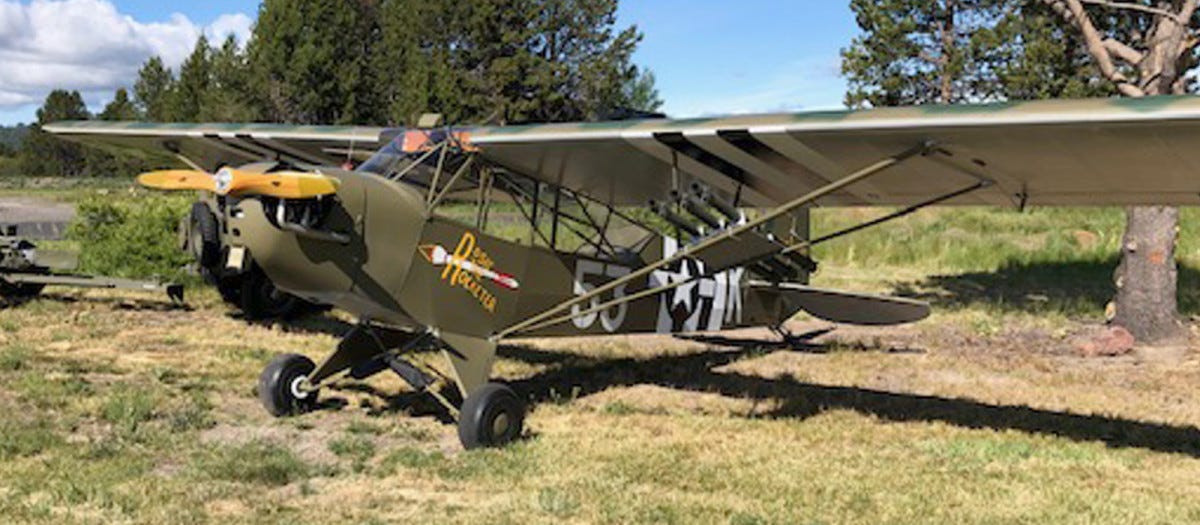
Aviation, understandably, took a major dive after the Great War. Aircraft are dependent upon a complex supply chain and require electronic parts, rare metallic alloys, and copious amounts of fuel. What’s more, the vast majority of the nation’s aircraft were concentrated in major cities and airports that were destroyed during the nuclear exchange. Most of what remained were auxiliary Air Force craft and simpler, more rugged planes. With few airports for them to travel between and only so much fuel to go around, the utility of aircraft has been greatly reduced, but that doesn’t mean they’re out of the picture.
Several Air Force-based factions exist, mostly in the western US where small airports received incoming transpolar bombers with nowhere else to land. Other factions took on their share of returning airmen, and there were some towns where even a single aircrew was enough to make the difference between continuity of government (however despotic) and refugee warlordism—notable examples of towns rescued by returning aircrews include Nantucket, Massachusetts and Myrtle Beach, South Carolina.
Military aircraft today tend to serve in the same role they did one hundred and fifty years ago, in the First World War. They scout enemy lines, spot artillery, deliver mail, orders, and VIPs to and from the battlefield, and have very limited combat capabilities. Some planes can deliver light cargo or even perform as ambulances, but most surviving aircraft today are small, Short Takeoff and Landing planes whose functions are limited. There is a growing effort continent-wide to restore aircraft to their prewar roles as fighters, ground attackers, and strategic bombers, but most factions simply lack the resources.
The vast majority of aircraft today are propeller planes, a large minority of which are turboprops. Jet planes are rare, but not unheard of among the largest, most powerful factions. The USA-Bozeman, USA-Dodge City, and USA-Elizabeth City all possess functional F-16 Fighting Falcons, which they use very sparingly due to their irreplaceable nature. A small handful of upstart factions, like Aztlan, the Kingdom of the Ozarks, and the Heartland Social Republic, field a small fleet of primitive fighter jets comparable to the 2nd-Generation fighters of the early Cold War. The limited supply of advanced electronics is the main bottleneck, but computerized systems that aren’t reliant on transistors are fair game.
The most romantic and intriguing aircraft of the post-nuclear age is the airship. Both blimps and rigid airships have made a small comeback from their near-extinction, thanks to their long range, fuel efficiency, and long lingering time. The USA-Elizabeth City has constructed two helium-filled rigid airships, the USS Inhofe and the USS Geldenhuys, which they send out on long-range missions across the United States to gather intelligence on the American wasteland, collect rare resources, and make contact with distant loyal factions, such as the Black Mesa Sector. These massive dirigibles sport luxurious living quarters, an expansive cargo bay, scientific research labs, and even carry six detachable F2N Hornets, bite-sized biplane parasite fighters.
The utility and cost-effectiveness of these gargantuan, questionably-safe airships is a question often brought up in Elizabeth City’s halls of power. The undersized, underfunded Air Force resents that the airships are under US Navy control, and the rump Congress thinks they are altogether too expensive. Nevertheless, the Navy—the true ruling power in Elizabeth City—is proud of the Inhofe and Geldenhuys, and considers them to be worthy prestige projects that showcase the might and wealth of their regime to an isolated and impressionable interior.
Index
Click here to read the master post of the series, with links at the bottom of the page to all other Fallen Continent entries.

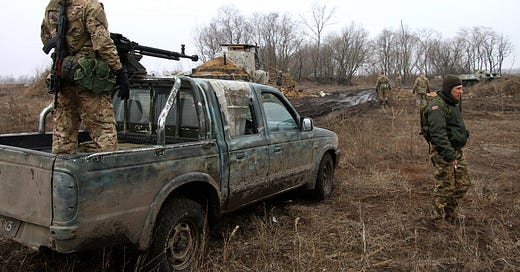



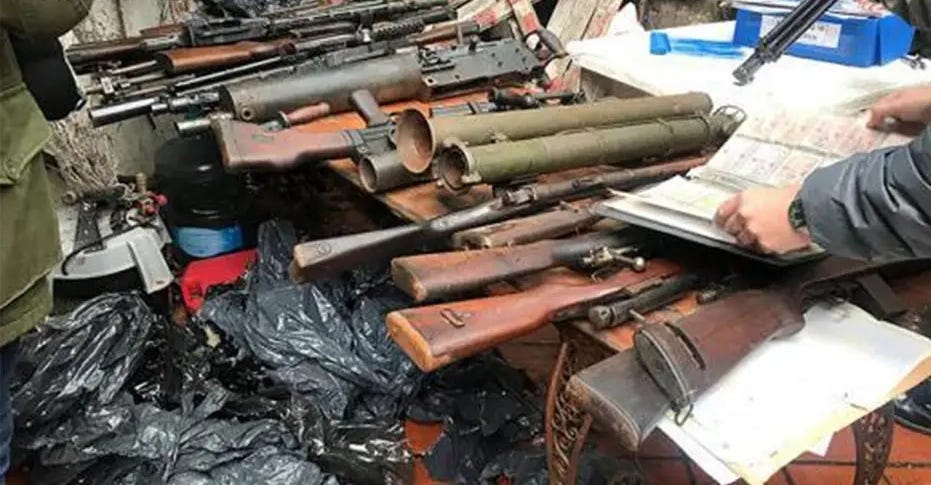

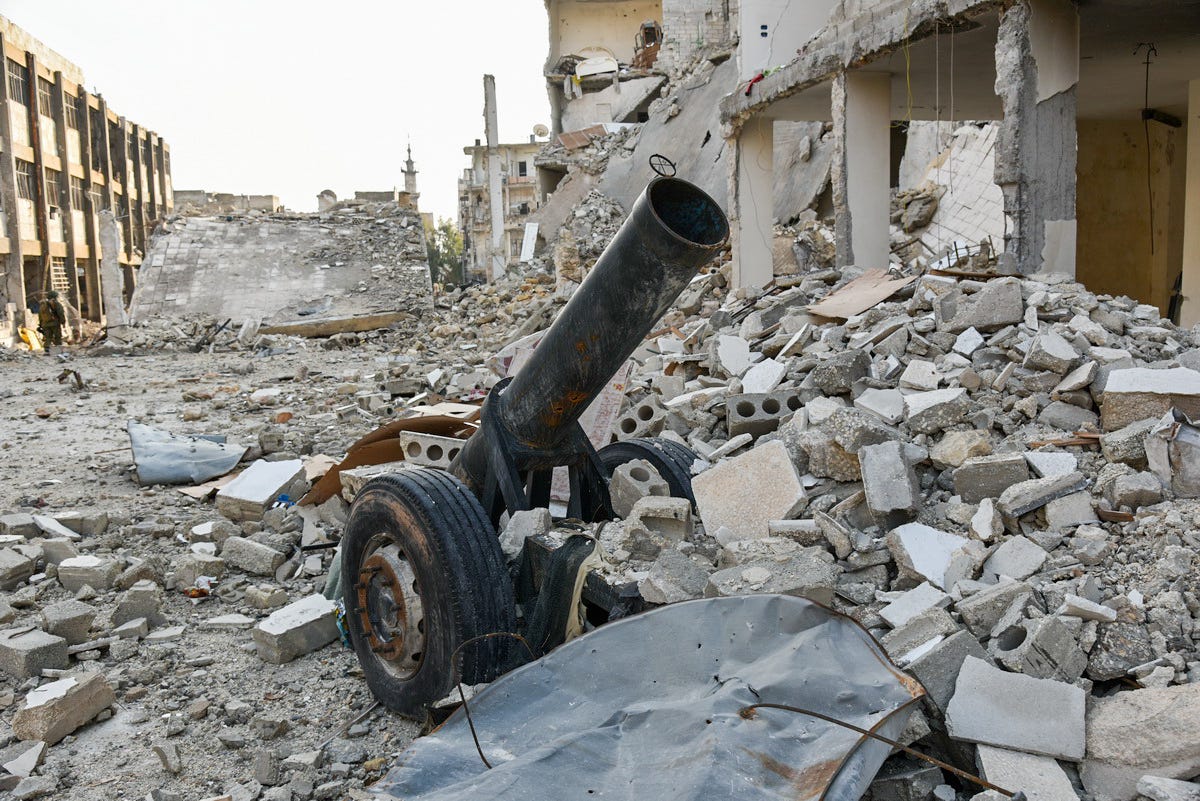
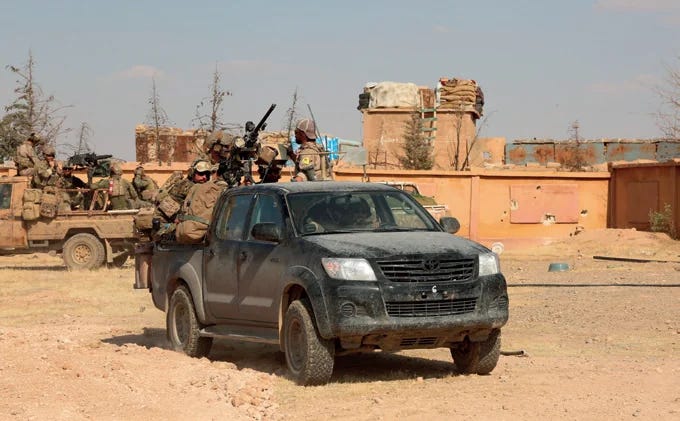
PoopMadness survived the war and went on to become the greatest firearm designer in the wastelands.
A story following a transcontinental blimp trip from the USA-EC would be fascinating. (I know your novel focuses on Oklahoma and the Ozarks, and that's a super cool setting too)